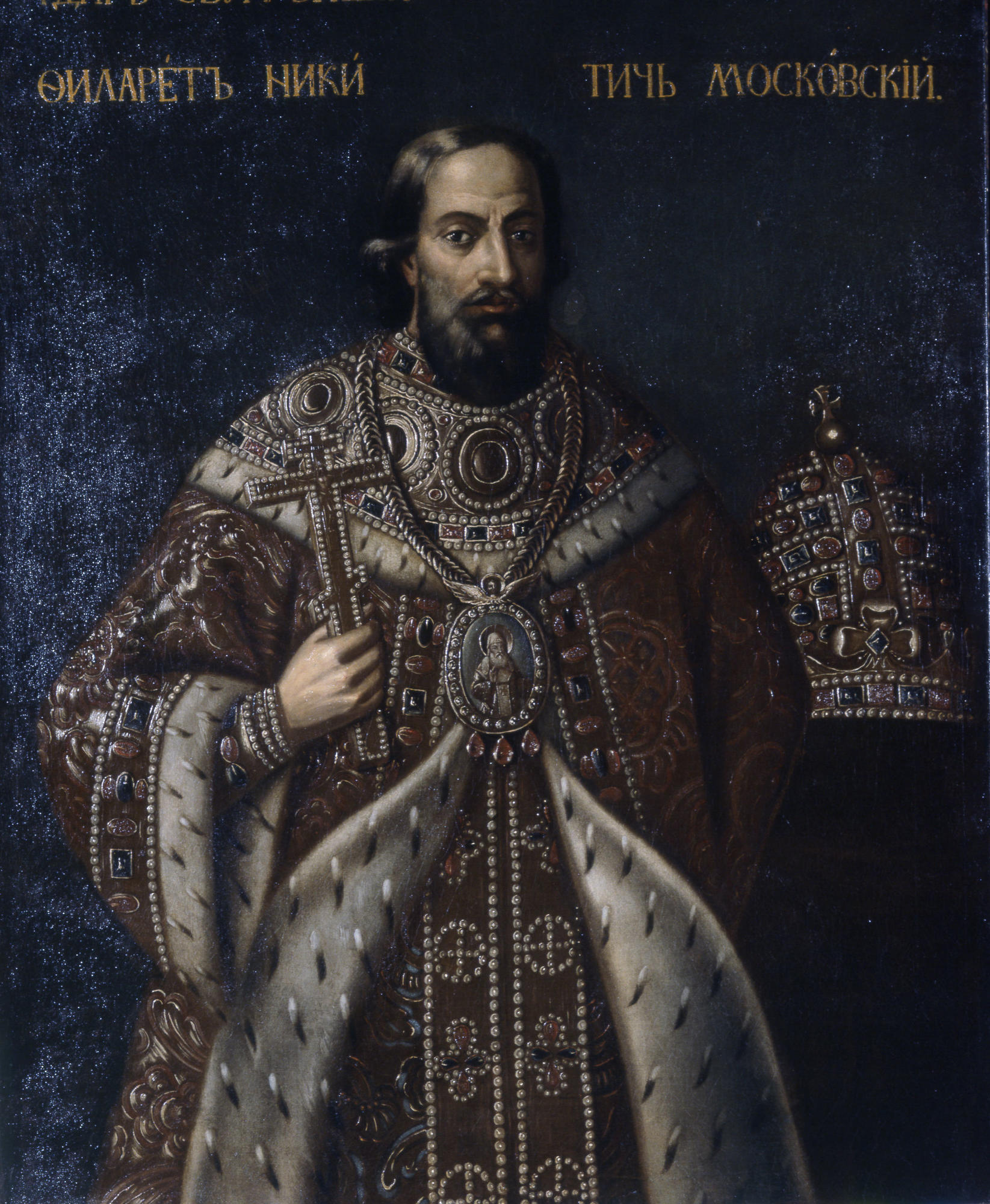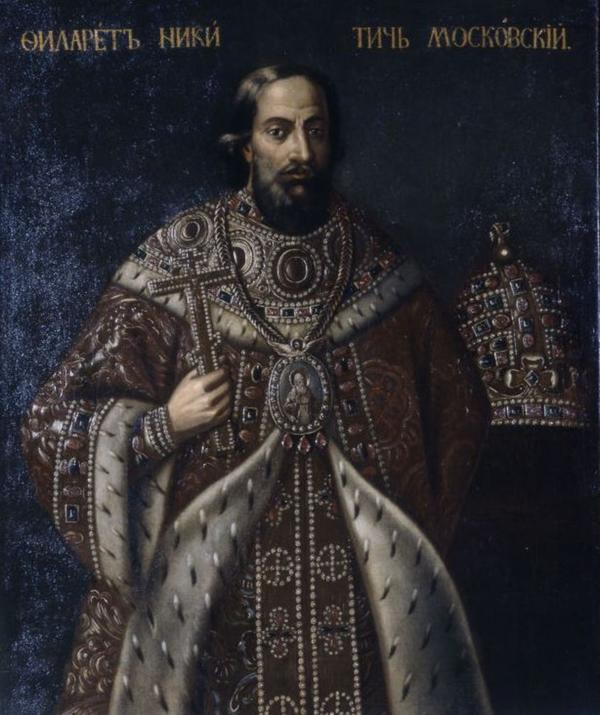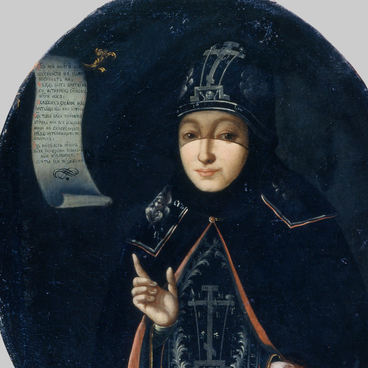The portrait, displayed at the exhibition, features Patriarch Filaret Nikitich, father of Michael Fyodorovich, the first Russian Tsar from Romanovs’ dynasty. Patriarch Filaret had a secular name of Fyodor Nikitich Romanov. In 15900-s this influential boyarin (nobility)occupied important positions in the government, he was a voivode (commander in the ancient Russian army) in the regiments, and conducted negotiations with foreign diplomats.
During the reign of Boris Godunov, Fyodor Nikitich was subjected to disfavor, like the other Romanovs, as he was considered Godunov’s rival in the fight for the Russian throne after Tsar’s death. Не was sent to an exile to the monastery, where he was made a monk against his will and given the name of Filaret. His wife, Ksenia Ivanovna, of Kostroma nobility descend, was also sent to a monastery and made a nun, named Marfa. Several years after, Filaret Nikitich was released from the monastery by False Dmitry I (Lzhedmitriy), and appointed Metropolitan of Rostov.
Afterwards, Filaret was commissioned as ambassador to Sigismund III, King of Poland, where he spent many years in captivity. After being released, he received a triumphant welcome in Moscow by his son, Michael Fyodorovich, who had been elected to the throne by that time. On his return, Filaret Nikitich became Patriarch of Moscow in the same year.
Filaret reigned together with Michael Fyodorovich to the last days of his life, being Patriarch at the same time. He ruled the state on a par with his son: his name appeared in the acts beside the Tsar’s, while his title was “ Great Sovereign, His Holiness Patriarch Filaret Nikitich’.
The representations of the Patriarch, prior to becoming a monk, when he still was boyarin Fyodor Romanov, have not survived up to our time. We know about his pictorial and print portraits in which he features as Holy Patriarch dressed in the attire appropriate to his rank, or as Great Sovereign, in the royal attire with the relevant regalia. The portrait represented at the exhibition, refers to the latter type. Filaret Nikitich is portrayed in the royal attire, his head uncovered by a headdress, the Mitre on the table, a cross in his hand. Barmy, a wide shoulder-mantle, put on the ceremonial dress of Tsars, is richly adorned with precious stones. Barmy was worn during the coronation or ceremonial appearance. The portrait was created by the unknown artist in the second half of the 18-th century.
During the reign of Boris Godunov, Fyodor Nikitich was subjected to disfavor, like the other Romanovs, as he was considered Godunov’s rival in the fight for the Russian throne after Tsar’s death. Не was sent to an exile to the monastery, where he was made a monk against his will and given the name of Filaret. His wife, Ksenia Ivanovna, of Kostroma nobility descend, was also sent to a monastery and made a nun, named Marfa. Several years after, Filaret Nikitich was released from the monastery by False Dmitry I (Lzhedmitriy), and appointed Metropolitan of Rostov.
Afterwards, Filaret was commissioned as ambassador to Sigismund III, King of Poland, where he spent many years in captivity. After being released, he received a triumphant welcome in Moscow by his son, Michael Fyodorovich, who had been elected to the throne by that time. On his return, Filaret Nikitich became Patriarch of Moscow in the same year.
Filaret reigned together with Michael Fyodorovich to the last days of his life, being Patriarch at the same time. He ruled the state on a par with his son: his name appeared in the acts beside the Tsar’s, while his title was “ Great Sovereign, His Holiness Patriarch Filaret Nikitich’.
The representations of the Patriarch, prior to becoming a monk, when he still was boyarin Fyodor Romanov, have not survived up to our time. We know about his pictorial and print portraits in which he features as Holy Patriarch dressed in the attire appropriate to his rank, or as Great Sovereign, in the royal attire with the relevant regalia. The portrait represented at the exhibition, refers to the latter type. Filaret Nikitich is portrayed in the royal attire, his head uncovered by a headdress, the Mitre on the table, a cross in his hand. Barmy, a wide shoulder-mantle, put on the ceremonial dress of Tsars, is richly adorned with precious stones. Barmy was worn during the coronation or ceremonial appearance. The portrait was created by the unknown artist in the second half of the 18-th century.



